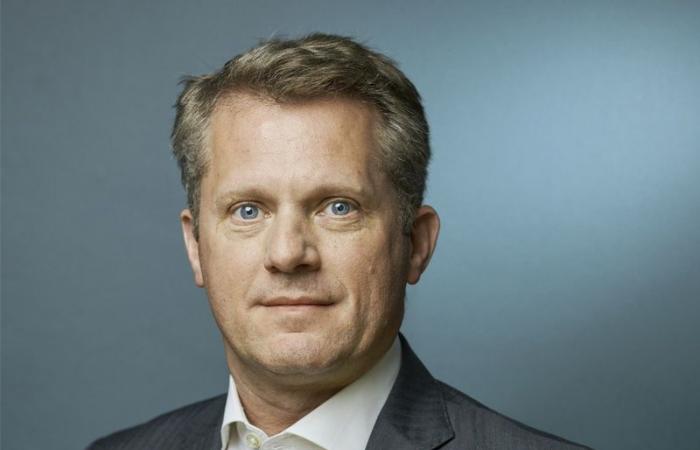The partnership between THEAM Quant Strategies of BNP Paribas Global Markets and BNP Paribas Exane Research leads to the creation of a fund that leverages AI. With Hugues de La Rochefoucauld.
The THEAM Quant – Healthy Living Opportunities (HLO) fund seeks exposure to key sectors, geographies and companies most in line with the healthy living theme, according to a press release published on Wednesday. The fund is the result of the partnership between THEAM Quant Strategies of BNP Paribas Global Markets and BNP Paribas Exane Research. HLO divides the sector into four segments: active lifestyle, comfort and well-being, diagnostics and treatments, and healthy eating.
The investment process integrates quantitative criteria with the aim of improving the risk/return profile. It draws on in-depth analyzes to identify the fundamental activities, technologies and investments that constitute the healthy habitat ecosystem, the press release continued. This fundamental information is enriched by a proprietary artificial intelligence (AI) model. The fund’s sector allocation is dominated by healthcare, as well as non-cyclical and cyclical consumer goods and services. These stocks are weighted by a quantitative optimization process and rebalanced on a quarterly basis. The fund excludes companies that participate in carbon-generating or questionable activities. Hugues de La Rochefoucauld, Head of THEAM Quant Fund Sales Switzerland, answers questions from Allnews:
What are the learnings from your approach to AI-driven data? How does it differ from a fundamental approach?
We do not limit ourselves to the analysis of the company’s revenues which would be essentially retrospective. We use artificial intelligence to analyze large amounts of written data, including company earnings calls, to produce relevant forward-looking information. It is important to note that our approach does not rely solely on AI as we combine it with the expertise of our analysts. It’s not “man versus machine” but “man with machine,” a synergy between human judgment and AI-driven analysis.
“The fund’s sector allocation is dominated by healthcare, as well as non-cyclical and cyclical consumer goods and services.”
After Robert Kennedy was appointed to the U.S. government, health care values collapsed. Is now the ideal time to invest in this theme?
As our analysts point out, it should be noted that Robert Kennedy’s nomination still needs to be confirmed by the Senate and his controversial views will likely make this process difficult. In the short term, discussions regarding this appointment are likely to harm sentiment towards vaccine manufacturers. Our analysts also believe that Robert Kennedy would redirect government resources to fight chronic diseases rather than investing in prescription drugs. Furthermore, recent comments from Robert Kennedy and Make America Healthy Again (MAHA) suggest that the topic of consumer health will be particularly relevant. We have a holistic approach to the “Healthy Living” theme, with health representing only one of the four segments identified, the others focusing on improving quality of life and the goal of a healthy lifestyle, which are involved in disease prevention. Furthermore, the inclusion of financial criteria aims to avoid investing in companies with the most fragile fundamentals, dynamically, with each new selection. Concretely, if a particular sector or segment sees its financial outlook deteriorate, financial filters make it possible to direct the composition of the final portfolio towards more profitable companies and/or segments.
What is your geographic approach?
We have a global geographic approach, with a starting universe covering more than 3,000 companies from different global markets. At the portfolio level, potential geographic biases are controlled to ensure diversification and exposure to the ecosystem as a whole.
When it comes to the topic of healthy lifestyles, do you focus more on the effects of demographic change (services for the elderly) or on food and pharmaceuticals?
Healthy Living Opportunities doesn’t just focus on the aging population. Concerning this part of the population, the objective is not limited to treating potential illnesses, but also to actively investing in a better quality of life. For the general population, we are interested in companies that aim to extend lifespan as well as those that improve general well-being, which involves healthy eating, regular physical activity and good hygiene. .
This reflects a paradigm shift: investing in preventative measures could be much more effective and even more cost-effective than waiting to treat diseases after they have developed (proactive rather than reactive approach).
“In practice, the fund is invested mainly in shares of companies from developed countries.”
In the healthcare sector, the best sector is obesity drugs. What are the best opportunities at the moment for the new fund?
The strategy is broken down into 4 pillars of activity and the approach does not define a particular view on a sub-activity because it is a disciplined and systematic process. On the other hand, companies must present an investment opportunity both in the theme and in terms of financial fundamentals. This recently resulted in the selection of Novo Nordisk, since released and replaced by Eli Lilly.
How do you try to diversify and stay flexible between active lifestyle, comfort and wellness, diagnostics and treatments, and healthy eating?
In order to ensure thematic diversification and avoid excessive sectoral biases, each of the four segments must have a minimum weight of 10% and a maximum of 50% in the final portfolio.
Will you invest more in developed or emerging markets?
The selection universe is made up of stocks from developed and emerging countries. In practice, the fund is invested mainly in shares of companies from developed countries.
Will you invest in infrastructure for the healthcare sector, which could transform your fund into an infrastructure fund?
Although the theme does not specifically focus on the aging population, living healthy also involves treating illnesses and supporting the lifestyle of this group. Without being limited to this, this includes retirement homes, senior care, telehealth: our scoring can therefore be brought to value the actions of companies active in these subjects (mainly “Health Care REITS” according to the GICS classification ).






